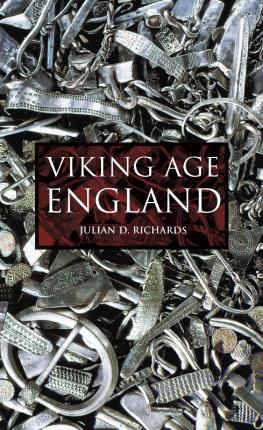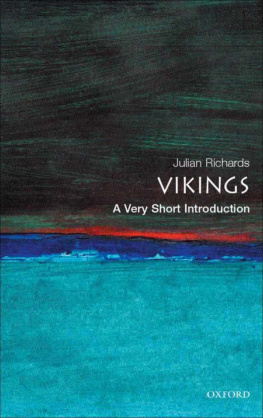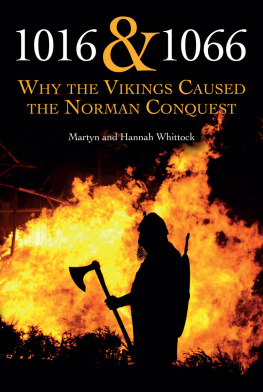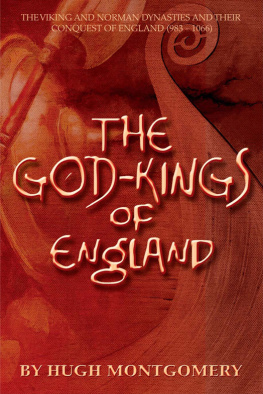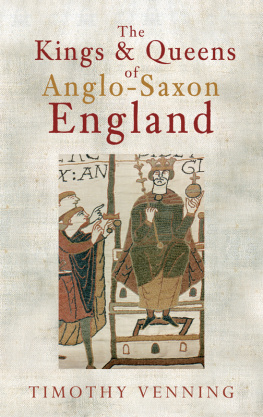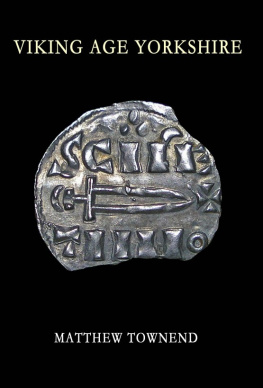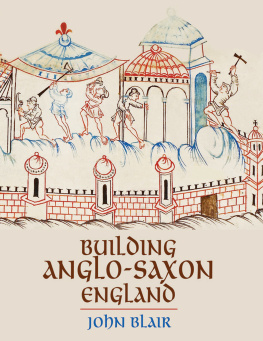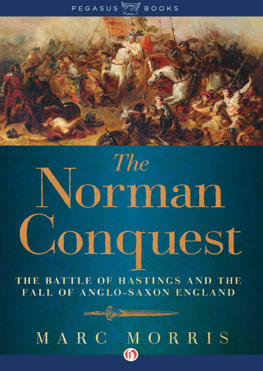Julian D. Richards - Viking Age England
Here you can read online Julian D. Richards - Viking Age England full text of the book (entire story) in english for free. Download pdf and epub, get meaning, cover and reviews about this ebook. year: 2004, publisher: Tempus, genre: Religion. Description of the work, (preface) as well as reviews are available. Best literature library LitArk.com created for fans of good reading and offers a wide selection of genres:
Romance novel
Science fiction
Adventure
Detective
Science
History
Home and family
Prose
Art
Politics
Computer
Non-fiction
Religion
Business
Children
Humor
Choose a favorite category and find really read worthwhile books. Enjoy immersion in the world of imagination, feel the emotions of the characters or learn something new for yourself, make an fascinating discovery.
- Book:Viking Age England
- Author:
- Publisher:Tempus
- Genre:
- Year:2004
- Rating:5 / 5
- Favourites:Add to favourites
- Your mark:
- 100
- 1
- 2
- 3
- 4
- 5
Viking Age England: summary, description and annotation
We offer to read an annotation, description, summary or preface (depends on what the author of the book "Viking Age England" wrote himself). If you haven't found the necessary information about the book — write in the comments, we will try to find it.
Viking Age England — read online for free the complete book (whole text) full work
Below is the text of the book, divided by pages. System saving the place of the last page read, allows you to conveniently read the book "Viking Age England" online for free, without having to search again every time where you left off. Put a bookmark, and you can go to the page where you finished reading at any time.
Font size:
Interval:
Bookmark:
VIKING AGE
ENGLAND
VIKING AGE
ENGLAND
JULIAN D. RICHARDS

First published by B.T. Batsford/English Heritage 1991
First published by Tempus 2000
This edition published 2007
Reprinted in 2010 by
The History Press
The Mill, Brimscombe Port
Stroud, Gloucestershire, GL5 2QG
www.thehistorypress.co.uk
Reprinted 2012
This ebook edition first published in 2013
All rights reserved
Julian D. Richards, 1991, 2007, 2013
The right of Julian D. Richards to be identified as the Author of this work has been asserted in accordance with the Copyright, Designs and Patents Act 1988.
This ebook is copyright material and must not be copied, reproduced, transferred, distributed, leased, licensed or publicly performed or used in any way except as specifically permitted in writing by the publishers, as allowed under the terms and conditions under which it was purchased or as strictly permitted by applicable copyright law. Any unauthorised distribution or use of this text may be a direct infringement of the authors and publishers rights, and those responsible may be liable in law accordingly.
EPUB ISBN 978 0 7509 5252 1
Original typesetting by The History Press
CONTENTS
PREFACE AND
ACKNOWLEDGEMENTS
This book is the substantially revised 2000 version of the volume first published in the Batsford/English Heritage series in 1991. In 2000 I took the opportunity to rewrite sections I was not happy with and to update the text in order to reflect new discoveries and shifting interpretations. This 2004 edition is unaltered apart from some changes to the format and layout.
The present book still relies upon the often unacknowledged labours of large numbers of archaeologists and others. I am especially grateful, however, to a smaller number from whom I have benefited from specific discussion, including Martin Biddle and Birthe Kjlbye-Biddle, Justine Bayley, Martin Carver, Dawn Hadley, Richard Hall, James Graham-Campbell, the late Jim Lang, Neil Price, David Stocker and Steve Roskams. To each of them, and to all those I havent mentioned by name, thank you for your help. Where you have saved me from errors I am especially grateful, but where mistakes remain they are, of course, my own responsibility.
Many people and organisations have generously allowed me to make use of drawings and photographs, and they also retain the copyright, as acknowledged in the captions. Many of the black and white line drawings for the first edition were prepared by Dawn Flower at the English Heritage Drawing Office. Additional drawings are by Chris Philo and Stephanie Wood.
THE VIKING AGE

This book is about the development of Anglo-Saxon England from AD 800 until the Norman Conquest. For almost 250 years England was subject to attacks from Scandinavia. Contemporary chroniclers called the raiders by many names, including heathens and pagans, as well as Northmen and Danes, but one of the names used to refer to them by the English was Viking, and this is now used to describe not only the raiders, but also the period during which they carried out their attacks. These centuries, from the ninth to the eleventh, have become known, therefore, as the Viking Age.
The Vikings themselves can be elusive. The introduction of Scandinavian art styles can be seen on jewellery and sculpture, but Scandinavian-style houses and graves are often difficult to identify. Indeed, the relationship between Scandinavian settlers and the existing population must be considered to see how far the newcomers adopted native customs or invented new ones, sometimes rendering themselves indistinguishable from the local people and invisible to the archaeologist; sometimes creating new identities. This story will focus, therefore, on the period rather than on the people, and will examine all the archaeological traces of Viking Age England. It will be concerned particularly with England where, as a result of major excavations conducted over the last 30 years in towns like York, Lincoln and London, and in the countryside at sites such as Goltho, Raunds and Wharram Percy, we may now be closer to understanding the nature of Scandinavian interaction with the local population. Scotland, the Northern Isles, and the areas bordering the Irish Sea were also subject to separate Scandinavian influence, but are outside the scope of this book. The Scottish Hebrides and the Isle of Man were settled as a Norse kingdom of Man and the Western Isles. They formed part of an important axis between the Hiberno-Norse of Dublin and the Anglo-Scandinavian kings of York. The Isle of Man maintains elements of its Norse heritage to the present day, including the tradition of meetings of the Viking assembly or Thing in an annual open-air meeting of the Manx Parliament, the Tynwald. Nonetheless both Scotland and the Isle of Man have been the subject of several recent books, and Scandinavian settlement there will only be considered in relation to developments in England.
Two themes run through this book. Firstly, what was the Scandinavian contribution to the development of Late Saxon England? How far did the newcomers simply modify local developments already in progress? Was there anything distinctive about Scandinavian settlements? Were the major trading towns, such as Jorvik, already established before Scandinavian traders arrived? What was the Scandinavian influence on the formation of the English state?
Secondly, we shall take up the question of Scandinavian and native interaction. What was the native response to Scandinavians in the areas settled? What was it about the Scandinavian character that meant that in some areas, such as the Danelaw, they disappeared, fusing with the local traditions; whilst in others, such as the Isle of Man, they preserved a distinctive culture. How did they adapt, both economically, and in social and religious terms, to local circumstances? We need to bear in mind that interaction between the two peoples would have been subject to a number of factors: the extent of social, economic and political dependence of one group on the other, the ability of people to talk with one another, the degree of intermarriage, or of cultural and religious assimilation. We must also bear in mind that this was a long and complex process, spanning three hundred years, with much local variation.
THE VIKINGS YESTERDAY AND TODAY
The precise derivation of the term Viking remains obscure. In Old Icelandic a vik was a bay or creek, and may have given its name to those sea-faring raiders who lurked in bays and estuaries. Vik is also the name of the area around the Oslofjord, and may have been used to describe anyone from that area of southern Norway. The Old Icelandic verb vikya, on the other hand, meant to turn aside and may have been used to describe those away from home. In the Icelandic Sagas vkingr came to be used as a noun to refer to a warrior, or pirate, vking was used to refer to an expedition. The majority of Scandinavians, therefore, were not Vikings; only those who went a-viking could really qualify for the description.
The first occurrence of wicing in Old English refers to Mediterranean pirates who may not even have been Scandinavians, centuries before the Viking Age. The term does not appear to have been used exclusively to refer to raiders from Scandinavia until the tenth century, under the influence of the Viking invasions. There are only five occurrences of wicings in the Anglo-Saxon Chronicle (Fell 1986; 1987), and each time the word seems to be used in connection with a small group of raiders, rather than an army. Its use appears to have died out during the Middle Ages, until it was reintroduced in the Romantic era and it was only during the nineteenth century that Viking became the standard term for Scandinavian invaders.
Next pageFont size:
Interval:
Bookmark:
Similar books «Viking Age England»
Look at similar books to Viking Age England. We have selected literature similar in name and meaning in the hope of providing readers with more options to find new, interesting, not yet read works.
Discussion, reviews of the book Viking Age England and just readers' own opinions. Leave your comments, write what you think about the work, its meaning or the main characters. Specify what exactly you liked and what you didn't like, and why you think so.

